This article is more than 5 years old.
Weather forecasts are something that we take for granted in the 21st century. Most of us don’t give much thought to the science behind our weather apps, websites, or 24-hour television channels. But in fact the science of meteorology is a fairly recent one. Two hundred years ago there was very little understanding of the causes of weather phenomena.
Instruments like the thermometer and barometer were developed in the 17th century. But it wasn’t until the early 19th century that many scientists began to make large, systematic studies of weather patterns.
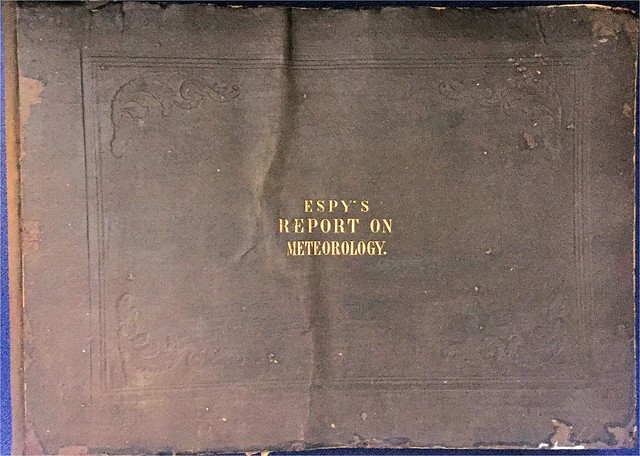
James Pollard Espy (1785-1860) was a pioneer of American meteorology. Born in rural Pennsylvania, he became a teacher and moved to Philadelphia in the 1830s. There he became involved with the Franklin Institute and began a serious study of weather.
Espy came up with a plan to create a statewide (and eventually national) network of amateur meteorologists who were supplied with the necessary instruments to record their local weather data and send it back to him. Eventually Espy amassed enough data to begin longitudinal studies of weather patterns on the North American continent.
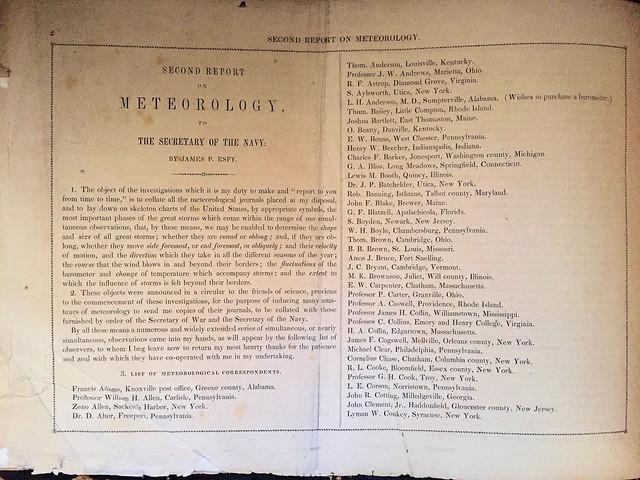
Espy’s most important contribution to the science of meteorology is his formulation of the convection theory—the observation that clouds and precipitation are caused by warm, moist air rising in a column from the earth’s surface. Espy laid out this “thermal theory” in his first published work, The Philosophy of Storms (1841). He became a popular feature on the 19th century American lecture circuit and earned the nickname The Storm King.
In 1847 Espy took up the post of meteorologist for the U.S. Navy, becoming the first officially appointed meteorologist in U.S. history.
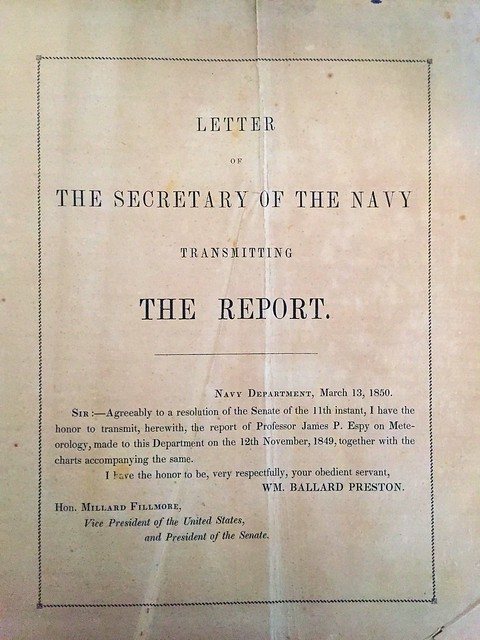
His studies benefited from state-of-the-art lab facilities at the Smithsonian Institute, and he secured government funding for a network of over 100 “weather correspondents” stationed in various locations east of the Mississippi. Espy always emphasized the importance of these far-flung reporters:
The astronomer is, in some measure, independent of his fellow astronomer; he can wait in his observatory till the star he wished to observe comes to his meridian; but the meteorologist has his observations bounded by a very limited horizon, and can do little without the aid of numerous observers furnishing him contemporaneous observations over a wide-extended area. (Report on Meteorology, 16)
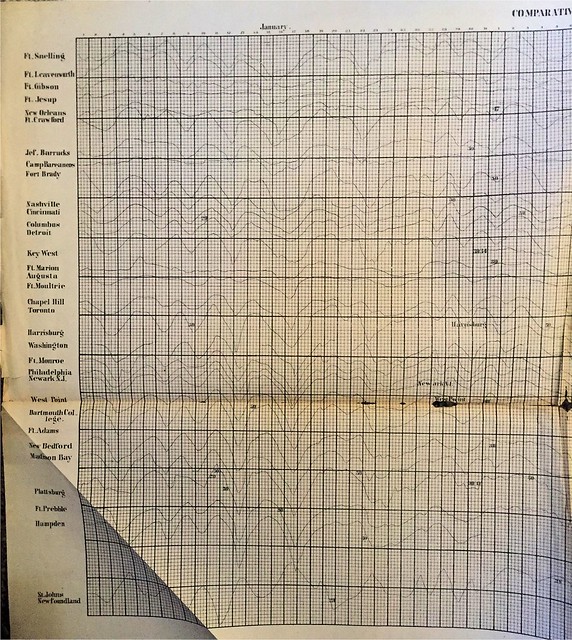
Communication by telegraph, which became widespread by the mid-19th century, allowed weather observations to be shared quickly enough that actual forecasting became possible. This information was vital for the Navy, since avoiding storms at sea could be a matter of life or death for sailors.
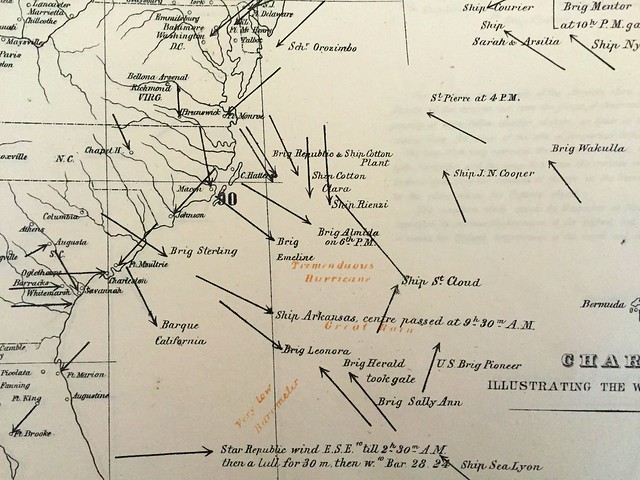
Espy provided regular meteorological reports to the Navy. ZSR Special Collections & Archives owns a copy of the compilation of his second and third reports, finished in 1849 and published in 1850. This publication is particularly important, as Espy explains his meteorological theories in some detail in the introduction.

The 1850 report also introduces modifications in his weather maps, with numbers in red indicating precipitation amounts and red lines showing changes in barometric pressure.
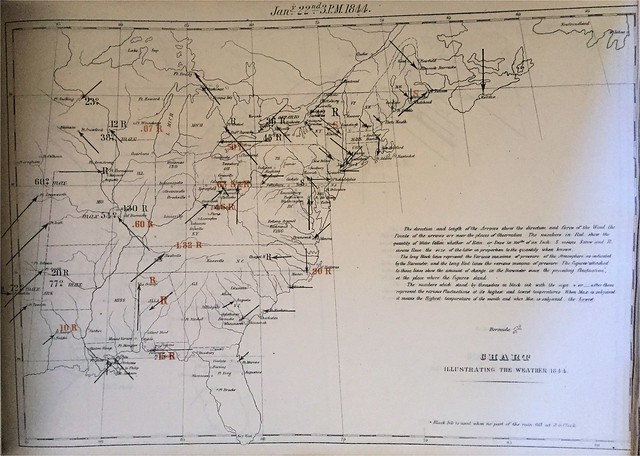
Of course, not all of Espy’s innovative theories were correct. He came in for considerable ridicule for his belief that smoke and ashes from large fires could alleviate drought. In his Report he proposed, as an experiment, deliberately setting huge summer wildfires throughout the Alleghany mountains in an attempt to produce rain on demand. Fortunately for the residents of the Alleghanies, the experiment was never carried out. Espy and his contemporaries made great progress in understanding our weather. But, as we’re well aware more than 150 years after his groundbreaking work, changing the weather to suit human needs is a much more difficult and complicated task.

3 Comments on ‘Report on Meteorology to the Secretary of the Navy, by James P. Espy (1850)’
Very timely!
I admire his attention to detail.
I remember working on that book and thought it looked fascinating. You’ve made it more meaningful!